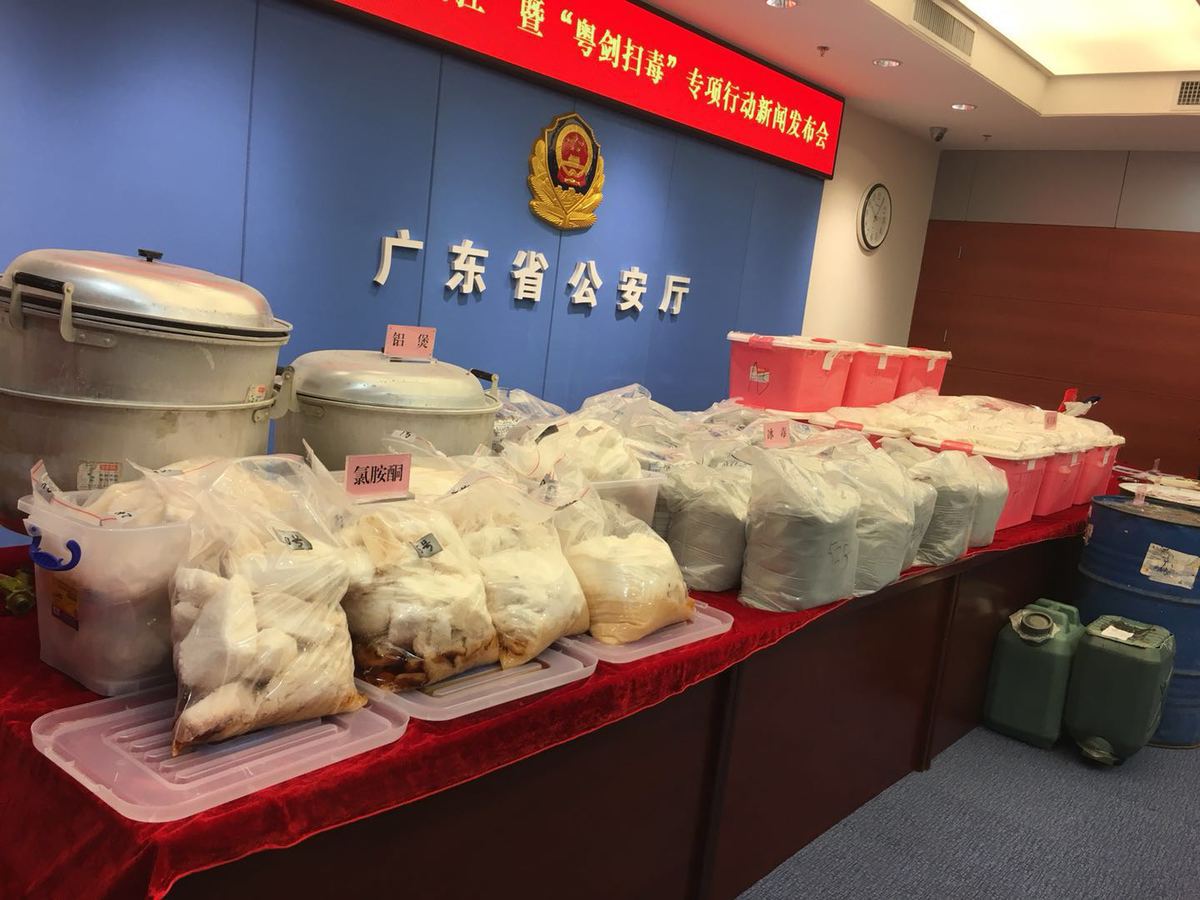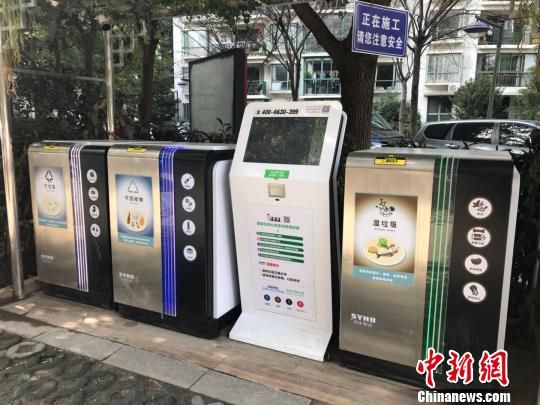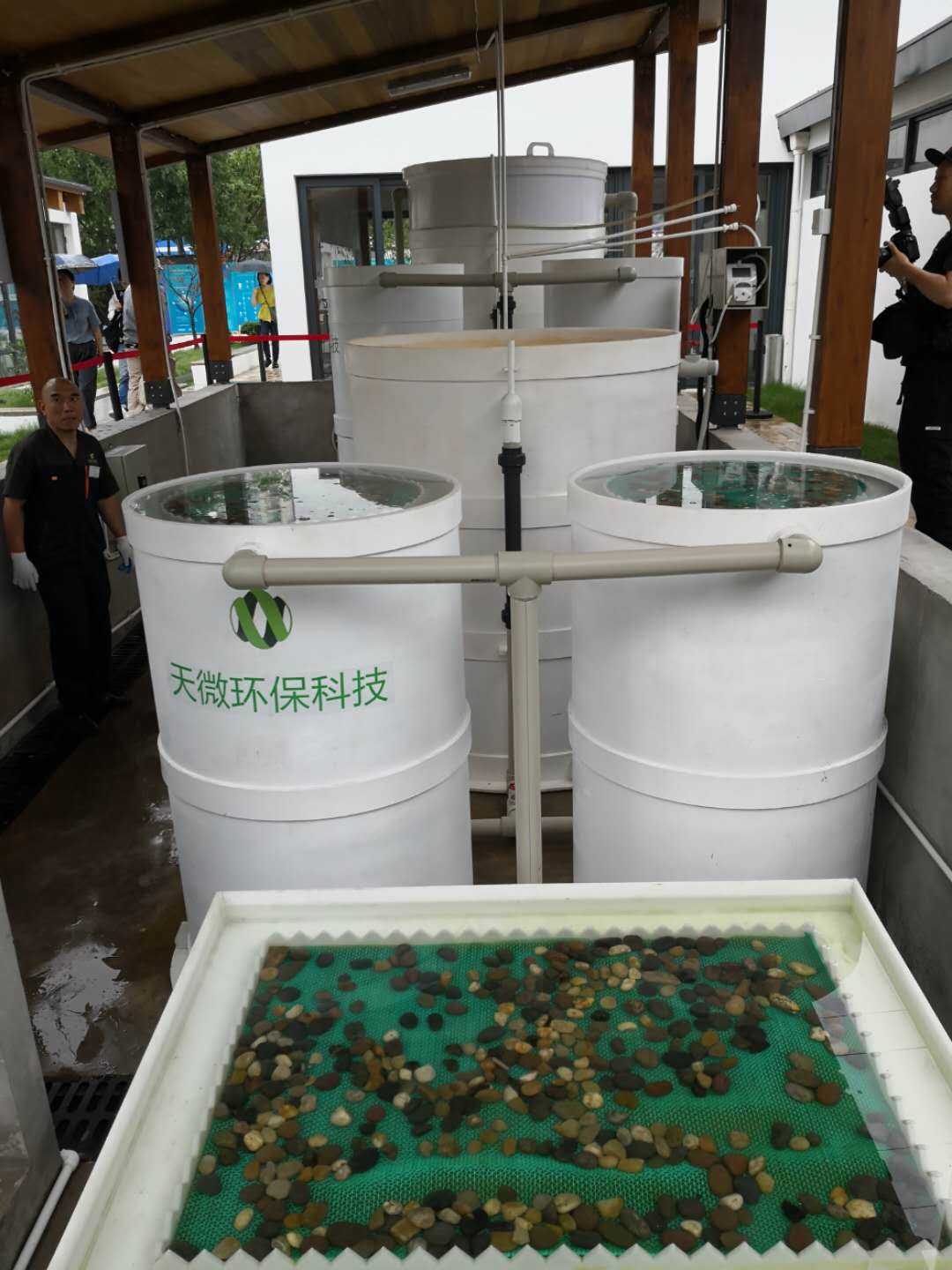(China Daily)14:14, June 26, 2019

A portion of the drugs seized by Guangdong police on display at a Guangzhou news conference on Tuesday. [Photo by Zheng Caixiong/chinadaily.com.cn]
Traffickers from major overseas drug-producing regions have stepped up efforts to infiltrate China in recent years, a senior anti-drug official said.
Police have found illegal drugs from the Golden Triangle, Golden Crescent and some South American countries being smuggled into the country through increasingly diverse routes and more covert means, Liu Yuejin, deputy director of the National Narcotics Control Commission, said ahead of the International Day Against Drug Abuse and Illicit Trafficking, which falls on Wednesday.
The Golden Triangle, which straddles Laos, Myanmar and Thailand, accounts for nearly 85 percent of the drugs illegally consumed in China, according to the Ministry of Public Security.
Last year, Chinese police seized 29.6 metric tons of drugs from the Golden Triangle, up 17.6 percent year-on-year, the commission said.
The haul included 4.6 tons of crystal methamphetamine, more than four times as much as in 2017, and 1.4 tons of ketamine, 35 times more than the previous year.
Domestic drug manufacturing was hit hard last year and the traditional sources of drug production in key provinces, including Guangdong, were greatly curbed, causing an imbalance between drug supply and demand, and higher prices for drugs nationwide, Liu said.
The ministry said police uncovered 412 illegal drug manufacturing cases nationwide last year, down 30.8 percent year-on-year, and authorities destroyed 268 facilities where drugs were manufactured, down 15.5 percent.
Some 14.7 tons of synthetic drugs were seized, a drop of 37 percent.
Illegal drug production in Guangdong, long the largest domestic source, declined sharply. The ministry said police uncovered 42 drug production cases last year, down 70 percent compared with 2017, smashed 28 production dens, a fall of 56 percent, and seized 1.65 tons of drugs, down 71 percent.
Driven by huge profits, a rising number of synthetic drugs were smuggled into China through illegal channels from the Golden Triangle, Liu said.
In November, Chinese police handed Vietnamese drug trafficker Nong Van Khoi over to Vietnamese police in Pingxiang in the Guangxi Zhuang autonomous region.
Khoi, the main suspect in a drug-trafficking ring, was accused of organizing the gangs members to traffic more than 100 kilograms of heroin into China, said Yan Qiwei, head of the narcotics control department in Guangxi.
Vietnamese police uncovered a major cross-border drug-trafficking case in February last year, and seized 100.8 kg of heroin, which the suspects were planning to traffic into China from Laos via a border crossing in Vietnam. Khoi escaped to China, Yan said, but was detained in Huizhou, Guangdong, in October.
In order to curb drug smuggling from the Golden Triangle, China has tightened management in border areas and strengthened law enforcement cooperation with Laos, Myanmar and Thailand on intelligence sharing and the control of chemicals used in the production of drugs.
Between October and December, the National Narcotics Control Commission coordinated a special operation in 14 provinces and regions, including Yunnan province, Guangxi and Guangdong, targeting drug trafficking in border areas, the ministry said.
During the three-month operation, police uncovered 5,669 drug-related cases, detained 7,930 suspects and confiscated 12.5 tons of drugs, it said.
Liu said China has signed a four-year action plan agreement, running from 2019 through 2022, with Laos, Myanmar, Thailand, Cambodia and Vietnam to conduct joint operations to eradicate the drug trade in border areas.
Under the plan, police from the six countries will focus on collecting evidence, launching joint investigations and conducting unified operations to root out cross-border drug-trafficking rings.
![]()




